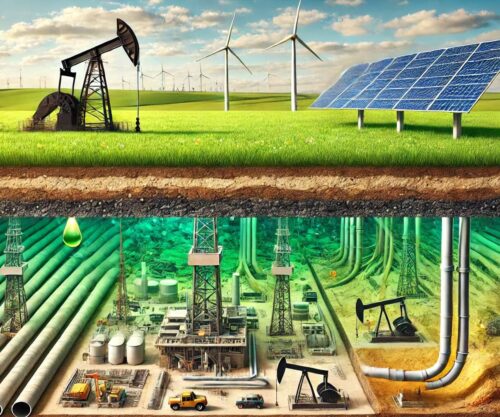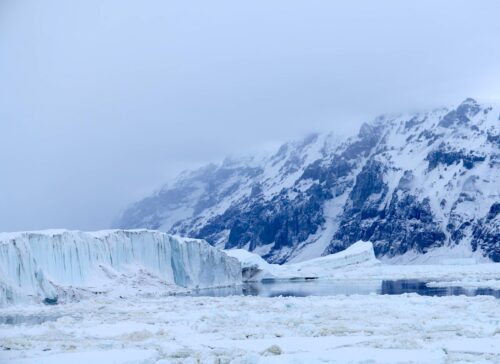
A recent paper by Ad Huijser, “Global Warming and the ‘impossible’ Radiation Imbalance,” published in Science of Climate Change, presents a detailed analysis that challenges the widely held assumption that rising greenhouse gas (GHG) concentrations are the sole, or even the primary, drivers of recent global warming. [some emphasis, links added]
Hat-tip Report 24.
By comparing observed energy trends with theoretical forcings, the study concludes that natural factors play a significant and dominant role in the warming observed since the mid-1970s.

The Discrepancy: GHG Forcing vs. Observed Warming
The study scrutinizes the Anthropogenic Global Warming (AGW) hypothesis, which attributes all observed warming solely to human-caused GHG emissions.
Using satellite data from the CERES program and ocean heat content (OHC) data from the ARGO float program, the author analyzed the Earth’s Top of Atmosphere (TOA) radiation imbalance—the net energy flux into the Earth’s thermal system.
Natural factors dominate
The central finding is that the assumed radiative forcing trend from GHGs is insufficient to account for the magnitude of the observed TOA radiation imbalance.
The discrepancy suggests that another significant factor must be involved in heating the planet.
The analysis points strongly toward natural forcings, specifically a long-term increase in incoming shortwave solar radiation, as the significant, dominant factor.
The Paper’s Findings:
Two-thirds of the observed global warming must be attributed to natural factors that increase incoming solar radiation. This is due to a natural forcing trend of about 0.035 W/m2.
Only one-third is attributable to the rising GHG concentrations. This is due to a GHG-related forcing of about 0.019 W/m2.
This increase in incoming solar energy is likely due to natural changes in factors like cloud cover and surface albedo (the reflectivity of the Earth’s surface). The study argues that the observed radiation imbalance correlates strongly with these natural processes, appearing largely unrelated to GHGs.
Implications for Future Climate Policy
The study’s findings show the planet’s warming is largely being driven by external factors (increased solar input) and not solely by an internal atmospheric resistance (GHGs), thus implying a much lower climate sensitivity than that suggested by most IPCC-endorsed General Circulation Models (GCMs).
This new paper questions the alarmist claims about “heat in the pipeline” and suggests that future warming will be driven by natural forcings as long as they are acting, rather than historical emissions.
It underscores the importance of fully accounting for natural variability, especially in solar input, when evaluating both historical warming trends and the effectiveness of future climate mitigation policies.
Read more at No Tricks Zone



















Empirical does not support the hypothesis that carbon dioxide is the main knob controlling the earth’s temperature. One of the most compelling points is that much of the warming blamed on man occurred between 1910 and 1941 when the carbon dioxide levels were relatively low and rising slowly. During this period was the dust bowl. Some try to dismiss this not representative of the entire earth, but Australia, and parts of Asia and Europe also had similar events during this time. Australia, South America, and Africa had extreme draught. During the early 1970’s we had a cooling trend and there was concern about another ice age. Yet, carbon dioxide was continuing to rise at this time. At the beginning of this centenary there was a hiatus of warming. A few have tried to deny this, but climate alarmists of the time came up with 64 excuses as to why the hiatus was happening. Carbon dioxide was continuing to increase at its normal rate. Empirical data clearly shows that other factors have a major influence.
Yet, there is the requirement that carbon dioxide be assigned as the only phenomena that controls earth’s temperature. This is critical to support the trillion dollar renewable energy industrial complex as well as the trillion dollar a year UN give away. It is needed to augment support for the vegan movement. It is needed to justify the billions of dollars that green groups receive. It is needed for social engineering such as fewer cars and smaller homes. The belief that carbon dioxide is the major control knob of earth’s temperature is needed to punish the middle class for our excessive life style and to force the contraction of national economies. With all of these factors clearly showing need for blaming carbon dioxide for temperature increases, any one disputing the idea is a denier.
Well said David. Anyone who actually studies the history of the climate knows that there are huge swings where we have ice ages last thousands of years and then inter-glacial periods like we are currently in. And even in these inter-glacial periods there have been warming such as the Roman Optimum and Medieval Warming with periods in between that are much colder–it seems that those pushing the Climate Scam conveniently ignore the Little Ice Age that earth came out of in the early 19th century. And that humans as well as the flora and fauna flourish during these warmer times, especially if CO2 is higher as it has been in previous periods.
The mainstream climate science community adheres to the prevailing politics of the day and is interested only in the propaganda value of their argument rather than studying and reporting real science
This paper is wrong.
60% of the warming since 1975 is night warming or TMIN
A reduction of cloudiness makes the nights cooler, not warmer.
Greenhouse gas emissions mainly make nights warmer.
Gas emissions must be a major cause of global warming …
Because despite the cooling effect of the cloudiness changes at night, the nights are warming faster than the days.
Daytime warming is mainly caused by a reduction in air pollution and a reduction of cloudiness. Percentage of cloudiness is an inaccurate proxy for the total effect of clouds. The reduction of cloudiness is actually so small it is likely tobe statistically insignificant.
CERES observations reveal puzzling anomalies in the cloud radiative effect (CRE), where the cooling effect of longwave CRE has decreased and the warming effect of shortwave CRE has increased over two decades (2000-2019). This yields a near-neutral net CRE trend, though the reasons for the regional changes in cloud properties that drive these effects are still being investigated.
This article contradicts what the CERES people say (above) about their own data.
Poppycock
Very succinct but on point. Greene is a follower of the corrupted climate science you mention in your second post.
Nikolov and Zeller’s 2023 paper found a 0.81 correlation between cloud albedo and temperature since 2001 using CERES data, essentially leaving no room for a GH effect.
The work of Nikolov and Zeller is widely rejected by the mainstream climate science community and is considered unscientific. Critics point to several major issues with their work:
Fundamental errors in physics. Scientists have pointed out that their model overlooks fundamental thermodynamic principles. For example, the effect of greenhouse gases on the radiative balance of a planet, a process that is well-established and observable, is ignored by their model.
Curve-fitting vs. scientific theory. Atmospheric scientists have described their methodology as “curve-fitting,” where variables are adjusted to match observed data
You mean the corrupted “mainstream client scientists”? They get their money from those who bet their money from those pushing this travesty.
The mainstream climate science community is composed mostly of clowns and Luddites who hate the American socio-economic model